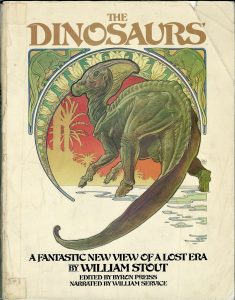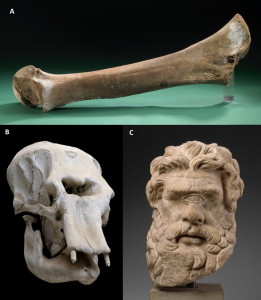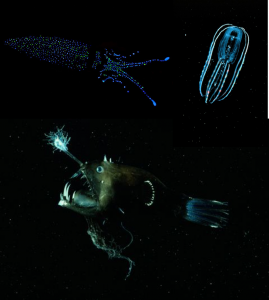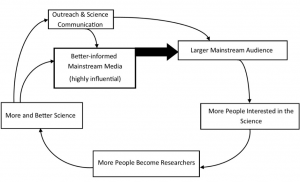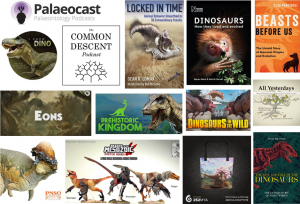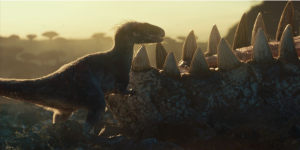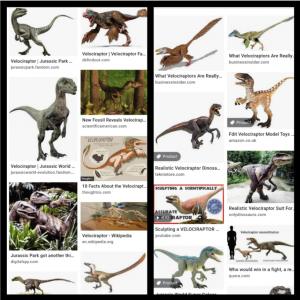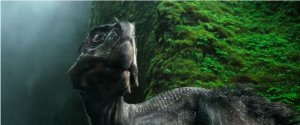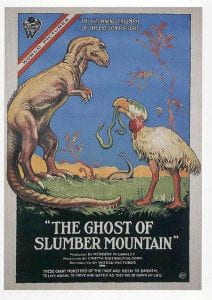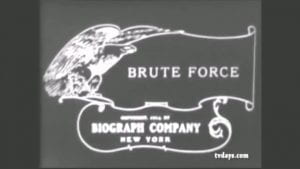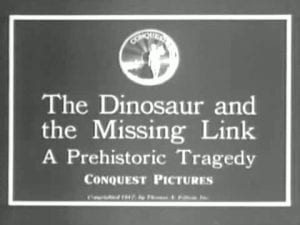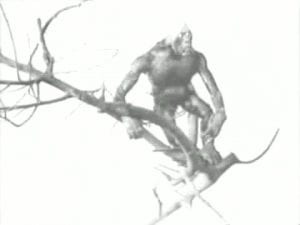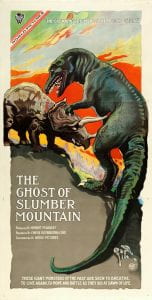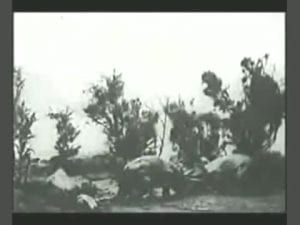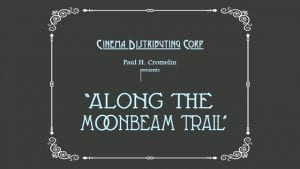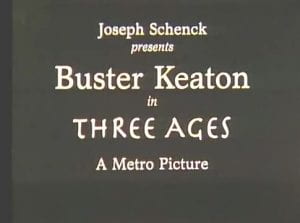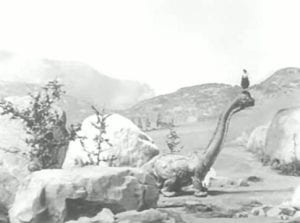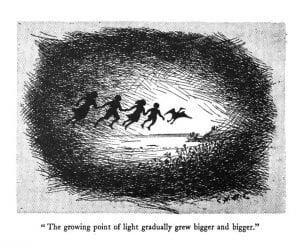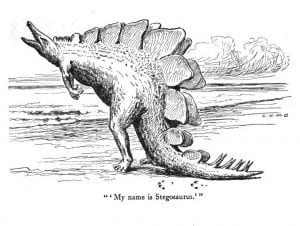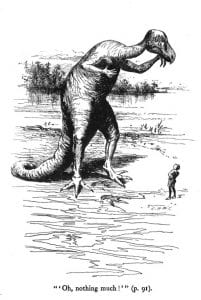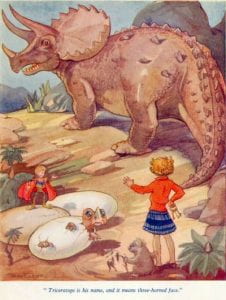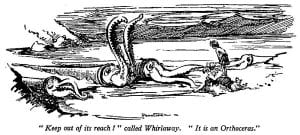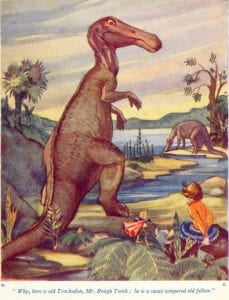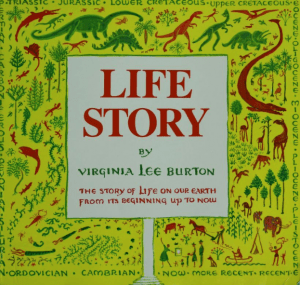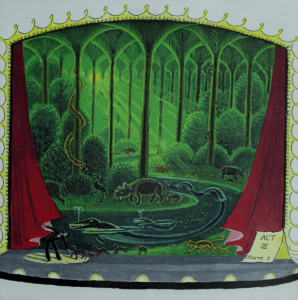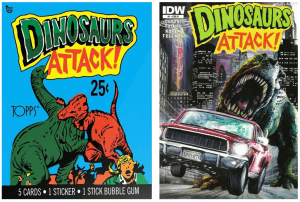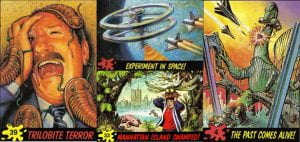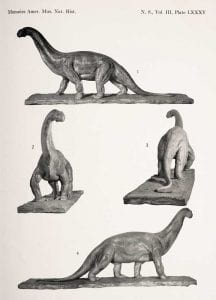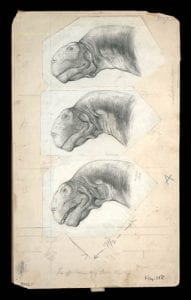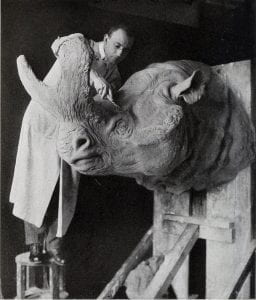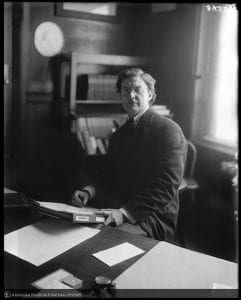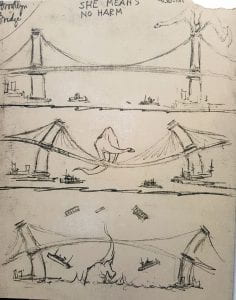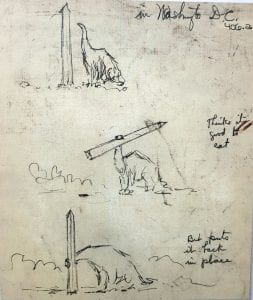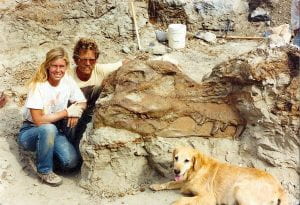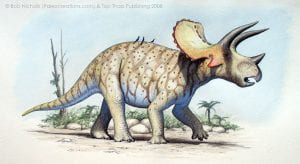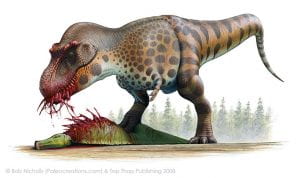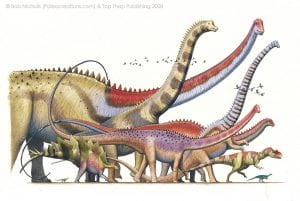 Chances are, when you were a child, you thought dinosaurs were the coolest things ever. Giant reptiles comparable to creatures of myth and legend and the stars of some of the best (and worst) pieces of media of your childhood. And if you are a sensible person, that sentiment carried over into adulthood. Regardless of the quality of a piece of media, the presence of dinosaurs is an ideal way to get it at least some attention and at least a few fans. This is an example of what is called the “Rule of Cool”, in which creative liberties can be forgiven and one’s suspension of disbelief is increased if the media is sufficiently “awesome” or entertaining. Movies, books, and TV shows are typically what people think of when it comes to Paleo-themed “Rule of Cool” media, but one more underappreciated venue is video games, where the Rule of Cool can be turned up to 11. In the 90s and 2000s especially, before Trevorrow’s Jurassic World trilogy suffocated the paleo media genre for a time, there was a myriad of dinosaur-themed video games whose main selling point was emphasizing this rule, such as Turok, Dino Crisis (1 and 2), King Kong: The Official Game of the Movie, the extinct-animal themed packs for the Zoo Tycoon games, and too many Jurassic Park games (both good and bad) to count. Many of these have left strong legacies or at the very least gathered dedicated cult followings over the years, but there was one paleo-themed video game from 2006 that debatably represents the zenith of the “Rule of Cool” and yet has sadly fallen into near-complete obscurity: Paraworld.
Chances are, when you were a child, you thought dinosaurs were the coolest things ever. Giant reptiles comparable to creatures of myth and legend and the stars of some of the best (and worst) pieces of media of your childhood. And if you are a sensible person, that sentiment carried over into adulthood. Regardless of the quality of a piece of media, the presence of dinosaurs is an ideal way to get it at least some attention and at least a few fans. This is an example of what is called the “Rule of Cool”, in which creative liberties can be forgiven and one’s suspension of disbelief is increased if the media is sufficiently “awesome” or entertaining. Movies, books, and TV shows are typically what people think of when it comes to Paleo-themed “Rule of Cool” media, but one more underappreciated venue is video games, where the Rule of Cool can be turned up to 11. In the 90s and 2000s especially, before Trevorrow’s Jurassic World trilogy suffocated the paleo media genre for a time, there was a myriad of dinosaur-themed video games whose main selling point was emphasizing this rule, such as Turok, Dino Crisis (1 and 2), King Kong: The Official Game of the Movie, the extinct-animal themed packs for the Zoo Tycoon games, and too many Jurassic Park games (both good and bad) to count. Many of these have left strong legacies or at the very least gathered dedicated cult followings over the years, but there was one paleo-themed video game from 2006 that debatably represents the zenith of the “Rule of Cool” and yet has sadly fallen into near-complete obscurity: Paraworld.
A real time strategy (RTS) game created by the German company Spieleentwicklungskombinat (SEK), and published by Sunflowers, Paraworld can best be described as “Age of Empires but with dinosaurs”. The game’s premise is that there is a parallel world (A Para-World if you will…) where prehistoric animals never went extinct and coexist with various warring human civilizations, represented with stellar art direction and backgrounds chock full of appealing warm color palettes. The main goal of the game is to gather resources (Food, wood, stone, and “skulls”), develop your civilization, create a powerful army to destroy your enemies. Simple, to the point, entertaining. Despite receiving fair reviews from critics on release, it was a commercial flop, selling only around 100,000 copies and causing SEK to shut down as a result. Which is unfortunate because this forgotten relic represents an interesting case study on the “Rule of Cool” factor inherent in paleo media, which is this game’s biggest strength and weakness.
To start with the game’s story, a group of scientists including the womanizing macho-man American geologist Anthony Cole, the snarky but compassionate Swedish biologist Stina Holmlund, and the wide-eyed Hungarian physicist Béla András Benedek are sent to this world by the leader of the SEAS (Society of Exact Alternative Sciences) Jarvis Babbit for what seems to be an expedition, only for them to realize that his real plan is to subjugate this Para-world as its ruler and seal off any future access by pushing the planet out of orbit via a massive jet engine inside a volcanic crater. For our heroes to stop the SEAs, they bring together the warring tribes and join forces with various disgruntled associates of the SEAs to help, including Babbit’s former assistant Ada Loven, engineer Nikolaj Taslow, naturalist James Warden, the Arch Druid, etc. So yeah, the game’s plot is incredibly derivative (See Avatar, Return of the Jedi, Last Samurai, etc), not to mention extremely dumb. It has plot holes you can drive a school bus through. But it’s also a story that’s not exactly meant to be taken seriously and it has its own corny charm to it. The game’s Rule of Cool factor also helps a lot. Action hero scientists leading warring tribes that ride dinosaurs and mammoths against robotic exo-suits and a giant jet engine inside a volcano is a sentence that is so over-the-top that it needs to be seen to be believed. In addition to this, if some of the aforementioned names seem familiar, a lot of the heroes are very on-the-nose expies of real scientists (Nikolaj Taslow for Nikola Tesla, James Warden for Charles Darwin, Jarvis Babbit for Charles Babbage, etc), but getting to have Darwin and Tesla fight alongside dinosaurs just makes the premise that much sillier to the point of being incredibly entertaining. It makes for both a good laugh and good dose of “Hell yeah”.
Stina Holmlund, and the wide-eyed Hungarian physicist Béla András Benedek are sent to this world by the leader of the SEAS (Society of Exact Alternative Sciences) Jarvis Babbit for what seems to be an expedition, only for them to realize that his real plan is to subjugate this Para-world as its ruler and seal off any future access by pushing the planet out of orbit via a massive jet engine inside a volcanic crater. For our heroes to stop the SEAs, they bring together the warring tribes and join forces with various disgruntled associates of the SEAs to help, including Babbit’s former assistant Ada Loven, engineer Nikolaj Taslow, naturalist James Warden, the Arch Druid, etc. So yeah, the game’s plot is incredibly derivative (See Avatar, Return of the Jedi, Last Samurai, etc), not to mention extremely dumb. It has plot holes you can drive a school bus through. But it’s also a story that’s not exactly meant to be taken seriously and it has its own corny charm to it. The game’s Rule of Cool factor also helps a lot. Action hero scientists leading warring tribes that ride dinosaurs and mammoths against robotic exo-suits and a giant jet engine inside a volcano is a sentence that is so over-the-top that it needs to be seen to be believed. In addition to this, if some of the aforementioned names seem familiar, a lot of the heroes are very on-the-nose expies of real scientists (Nikolaj Taslow for Nikola Tesla, James Warden for Charles Darwin, Jarvis Babbit for Charles Babbage, etc), but getting to have Darwin and Tesla fight alongside dinosaurs just makes the premise that much sillier to the point of being incredibly entertaining. It makes for both a good laugh and good dose of “Hell yeah”.
Going through the specific tribes, the game has 3 warring factions with their own visual style, inspirations, and strengths. The heavily armored Norsemen are a tribe very clearly inspired by the Vikings and other ancient Northern European cultures, right down to their weaponry and architecture. This tribe is specialized in heavily armored units and many of their animals consist of Pleistocene mammals. Alongside Megaloceros and wild boars, their stronger units include woolly rhinos and mammoths, which can either serve as dedicated close combat units, infantry transport ala the Oliphaunts in Lord of the Rings, or long-range artillery with ballistae and log cannons that shoot entire tree trunks at buildings and troops. They also have a few dinosaurs in the form of Kentrosaurus and the massive Triceratops (The latter of which being their strongest unit), steam powered tanks with battering rams and ballistae, and wooden/metal naval ships. They are also very stationary, relying on heavy fortifications to defend themselves.
 By contrast, the nomadic Dustriders are incredibly flexible. Inspired by many nomadic African and Middle Eastern tribes in our own world, they can take down their buildings and retrieve the resources needed to build them back, allowing them to quickly dismantle their camps and move them to a more suitable location. Along with this reliance on mobility, the Dustriders are also specialized in cavalry, using massive dinosaurs such as Ankylosaurus, Stegosaurus, Brachiosaurus, Allosaurus and Tyrannosaurus as powerful combat units that can be upgraded with coats of bone armor. Many of these dinosaurs can also be converted at will, so a Brachiosaurus can be quickly converted to an artillery unit with a massive catapult on its back to shoot poisonous rocks at buildings and then revert to a close combat unit in seconds. This even extends to their naval fleets. While they have long range catamarans, most of their naval ships are marine reptiles such as Macrochlemys and Kronosaurus.
By contrast, the nomadic Dustriders are incredibly flexible. Inspired by many nomadic African and Middle Eastern tribes in our own world, they can take down their buildings and retrieve the resources needed to build them back, allowing them to quickly dismantle their camps and move them to a more suitable location. Along with this reliance on mobility, the Dustriders are also specialized in cavalry, using massive dinosaurs such as Ankylosaurus, Stegosaurus, Brachiosaurus, Allosaurus and Tyrannosaurus as powerful combat units that can be upgraded with coats of bone armor. Many of these dinosaurs can also be converted at will, so a Brachiosaurus can be quickly converted to an artillery unit with a massive catapult on its back to shoot poisonous rocks at buildings and then revert to a close combat unit in seconds. This even extends to their naval fleets. While they have long range catamarans, most of their naval ships are marine reptiles such as Macrochlemys and Kronosaurus.
Finally, the mysterious Dragon Clan is the most technologically advanced of the three tribes. Inspired by many Asian cultures, particularly ancient Japanese (complete with ninjas, samurai, and sumo wrestlers), they are the only tribe to have gunpowder. This allows them to have legitimate tanks, Parasaurolophus and “Seismosaurus” with gatling guns fighting alongside Baryonyx and Saltasaurus, and Muraenosaurus that serve as submarines complete with torpedoes alongside their flamethrower and rocket firing sailboats. In addition, they rely on guerilla warfare with long-range weapons and devastating traps (Spike traps, land mines, snares, etc). Together, these tribes are the best example of the game’s “Rule of Cool” turned up to 11. Realistically, maintaining entire armies of multi-ton dinosaurs would be difficult at best and downright impossible at worst. Not to mention they would quickly get phased out by more modern mechanical weaponry. But the sheer entertainment value of vikings and ninjas riding and fighting dinosaurs is enough to increase the suspension of disbelief.
The SEAS are the final faction in the game and are only playable with an unofficial expansion pack. By contrast to the naturalistic tribes with their living cavalry and more primitive weaponry, the SEAS have legitimate firearms such as muskets, machine guns and cannons. Additionally, they have steam-powered mechanical units ranging from motion-capture exosuits to vaguely dinosaur-shaped mechas, some of which are also equipped with machine and gatling guns. This is one area where even the “Rule of Cool” factor had to be sacrificed for the sake of gameplay. While seeing 20th century tanks and ships fight armies of dinosaurs would be the zenith of the “Rule of Cool”, it would only be for the short term. Realistically, the invading force with modern technology would have little difficulty wiping out more primitive tribes and the game required to make a few compromises to make it as fair as possible. Along with some questionable balancing (Gatling guns not melting down health in 5 seconds flat), 20th century weapons such as tanks and jets were not included and had to be replaced by the exosuits, things that dinosaur cavalry would have a fighting chance against. In addition, the tribes were equipped with their own tanks and heavy armor, which helps even the odds. While most of the game’s gameplay/story issues can be tolerated with “Rule of Cool”, they made the right call in sacrificing a bit of it to be as fair a fight as possible.
primitive weaponry, the SEAS have legitimate firearms such as muskets, machine guns and cannons. Additionally, they have steam-powered mechanical units ranging from motion-capture exosuits to vaguely dinosaur-shaped mechas, some of which are also equipped with machine and gatling guns. This is one area where even the “Rule of Cool” factor had to be sacrificed for the sake of gameplay. While seeing 20th century tanks and ships fight armies of dinosaurs would be the zenith of the “Rule of Cool”, it would only be for the short term. Realistically, the invading force with modern technology would have little difficulty wiping out more primitive tribes and the game required to make a few compromises to make it as fair as possible. Along with some questionable balancing (Gatling guns not melting down health in 5 seconds flat), 20th century weapons such as tanks and jets were not included and had to be replaced by the exosuits, things that dinosaur cavalry would have a fighting chance against. In addition, the tribes were equipped with their own tanks and heavy armor, which helps even the odds. While most of the game’s gameplay/story issues can be tolerated with “Rule of Cool”, they made the right call in sacrificing a bit of it to be as fair a fight as possible.
The ”Rule of Cool” even factors into the musical score, which is the best thing about this game. The score is very epic and grand in scale, but to its credit it also does a great job representing each tribe in audio form. The Norsemen’s themes nail the hardy and resilient feel of the tribe, like something you would hear in Conan the Barbarian. The Dustrider music really make you feel like you’re travelling through the world’s savannahs and deserts alongside a caravan of dinosaurs Lawrence of Arabia style. The Dragon Clan’s motifs showcase the tribe’s tranquil Last Samurai-esque feel and their trickster vibe perfectly. Finally, the SEAS theme sounds appropriately mechanical and authoritarian. It’s a fantastic score overall and even as the game itself has faded into obscurity, the music has found a small yet dedicated cult following.
 So, this all begs the question: Why did the game fail? How did a game that is “Rule of Cool” personified become such a flop? Well, there were several factors. For one, it came out at a time where RTS games already had their day. By 2006, the genre’s peak in popularity with games like Starcraft, Warcraft 3, and Age of Empires was a distance memory and PC gaming was slowly being outcompeted by consoles such as Nintendo, Playstation and Xbox. It was extremely difficult for RTS games to carve their niche into the market at a time where first person shooters and open world games were gaining significant traction. So Paraworld had a severe case of bad timing. For two, when the “Rule of Cool” factor that the game relied on was peeled away, there wasn’t much left to help it stand out against its counterparts. Paraworld’s mechanics and gameplay loop, while smooth, was derivative of Age of Empires to the point that many reviews had pointed out the comparison. Even the Army Controller mechanic was a bit of a mixed bag. On the one hand, it allows you to properly micromanage your armies and check on each and every one of your units. But on the other hand, the limit of 52 units and the way it’s structured results in the battles being small in scale and limits what kind of armies you could make. These factors simply added up and created a recipe for commercial disaster and it resulted in a game that me and maybe 12 other people in the entire world still remember.
So, this all begs the question: Why did the game fail? How did a game that is “Rule of Cool” personified become such a flop? Well, there were several factors. For one, it came out at a time where RTS games already had their day. By 2006, the genre’s peak in popularity with games like Starcraft, Warcraft 3, and Age of Empires was a distance memory and PC gaming was slowly being outcompeted by consoles such as Nintendo, Playstation and Xbox. It was extremely difficult for RTS games to carve their niche into the market at a time where first person shooters and open world games were gaining significant traction. So Paraworld had a severe case of bad timing. For two, when the “Rule of Cool” factor that the game relied on was peeled away, there wasn’t much left to help it stand out against its counterparts. Paraworld’s mechanics and gameplay loop, while smooth, was derivative of Age of Empires to the point that many reviews had pointed out the comparison. Even the Army Controller mechanic was a bit of a mixed bag. On the one hand, it allows you to properly micromanage your armies and check on each and every one of your units. But on the other hand, the limit of 52 units and the way it’s structured results in the battles being small in scale and limits what kind of armies you could make. These factors simply added up and created a recipe for commercial disaster and it resulted in a game that me and maybe 12 other people in the entire world still remember.
Despite everything, however, I would recommend Paraworld for those who are looking for something different than the typical paleo video games coming out today. While ARK: Survival Evolved serves as a clear spiritual successor, its lackluster gameplay mechanics, mixed bag of creature designs, infamously bad optimization, and lack of direction makes it a somewhat poor follow-up that fails to replicate Paraworld’s charm. Between its smooth, if derivative, gameplay, incredible musical score, appealing art direction, an entertainingly silly story and a nice variety of tribes complete with prehistoric creatures to lead into battle, Paraworld is the personification of the inherent “Rule of Cool” factor of paleomedia, for better and for worse.
Survival Evolved serves as a clear spiritual successor, its lackluster gameplay mechanics, mixed bag of creature designs, infamously bad optimization, and lack of direction makes it a somewhat poor follow-up that fails to replicate Paraworld’s charm. Between its smooth, if derivative, gameplay, incredible musical score, appealing art direction, an entertainingly silly story and a nice variety of tribes complete with prehistoric creatures to lead into battle, Paraworld is the personification of the inherent “Rule of Cool” factor of paleomedia, for better and for worse.
References
Ark: Survivor Evolved (2017) Project Wildcard. [Video Game]. USA: Wildcard Properties, LLC.
Dino Crisis (1999) Capcom Production Studio 4. [Video Game]. Japan: Capcom.
Dino Crisis 2 (2000) Capcom Production Studio 4. [Video Game]. Japan: Capcom.
Jurassic World (2015) Directed by Trevorrow, C. United States: Univeral Pictures.
Jurassic World: Fallen Kingdom (2018) Directed by Bayona, J.A. United States: Univeral Pictures.
Jurassic World: Dominion (2022) Directed by Trevorrow, C. United States: Univeral Pictures.
Peter Jackson’s King Kong: The Official Game of the Movie (2005) Ubisoft Montpellier. [Video Game]. USA: Ubisoft.
Paraworld (2006) Spieleentwicklungskombinat. [Video Game]. Germany: Sunflowers, Ubisoft.
“ParaWorld for PC Reviews”. Metacritic. Fandom.
Paraworld – Gaming Nexus. (2025). Gaming Nexus. https://gamingnexus.com/Article/1385/Paraworld
Turok (2008) Propoganda Games. [Video Game]. USA: Disney Interactive Studios.
Winckler, Lars (January 23, 2007). “Dinosaurier bringen PC-Spielestudio zu Fall”. Die Welt (in German). Axel Springer SE.
Zoo Tycoon: Dinosaur Digs (2002) Blue Fang Games. [Video Game]. USA: Microsoft.
Zoo Tycoon 2: Extinct Animals (2007) Blue Fang Games. [Video Game]. USA: Microsoft.













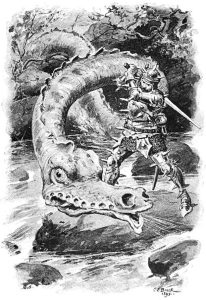
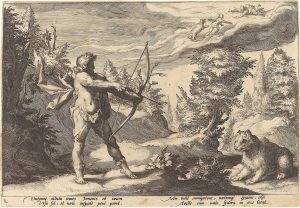
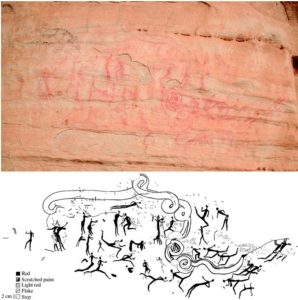


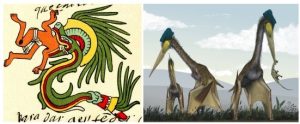
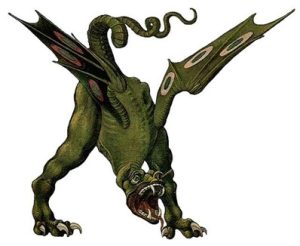
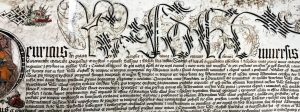
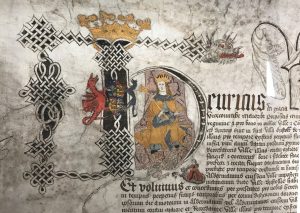
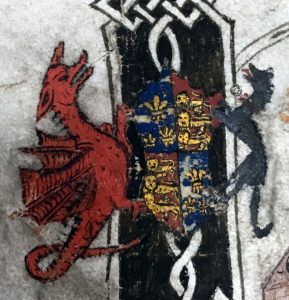
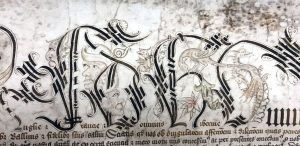
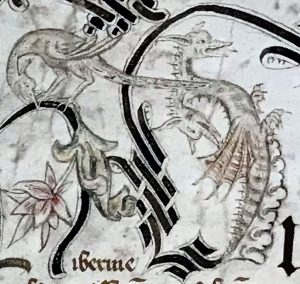
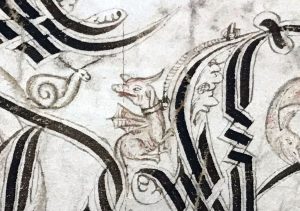
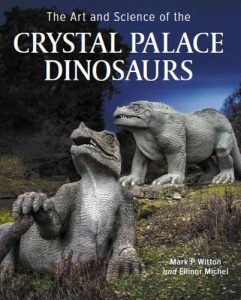
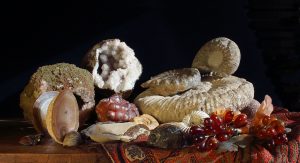 I was delighted to find my photograph Still Life with Fossil Seafood accepted for the Royal Academy “Summer” Exhibition this year. They say “summer” but it has only just opened to the public and goes on until 2 January. So, maybe more of a Devensian or Anglian summer, but with shorter days. However, when you go into the show it has the colour and energy of the brightest summer. It is also available to view online
I was delighted to find my photograph Still Life with Fossil Seafood accepted for the Royal Academy “Summer” Exhibition this year. They say “summer” but it has only just opened to the public and goes on until 2 January. So, maybe more of a Devensian or Anglian summer, but with shorter days. However, when you go into the show it has the colour and energy of the brightest summer. It is also available to view online 
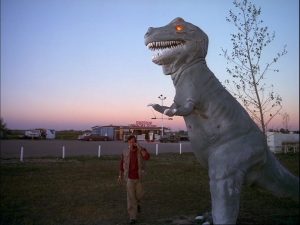
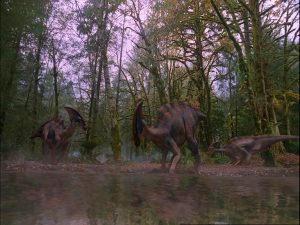

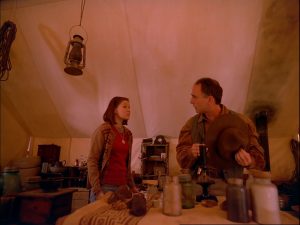
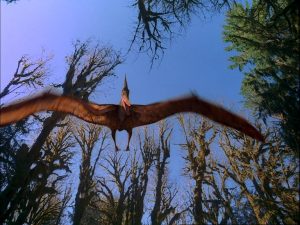
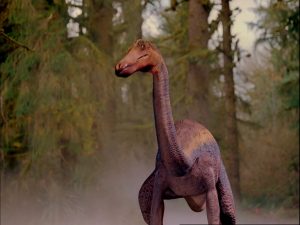
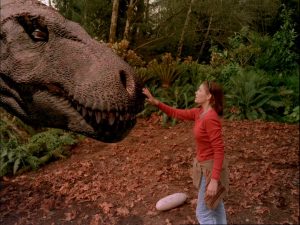
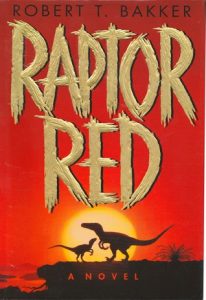
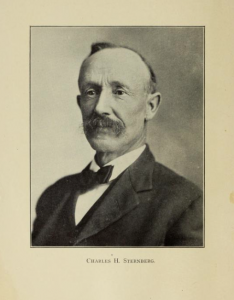 Sternberg’s prose is colorful. He paints vivid pictures that, although dated by today’s science, are evocative of a lost era. Here he describes the battle between a Trachodon and a Gorgosaurus:
Sternberg’s prose is colorful. He paints vivid pictures that, although dated by today’s science, are evocative of a lost era. Here he describes the battle between a Trachodon and a Gorgosaurus: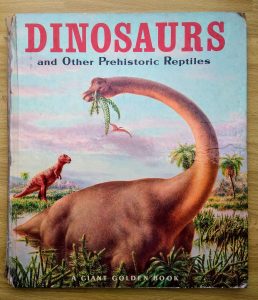
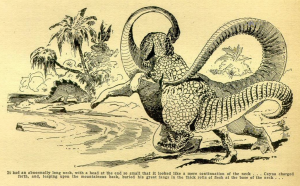
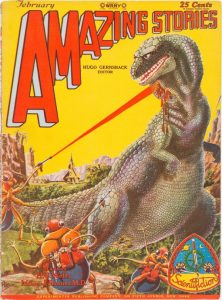
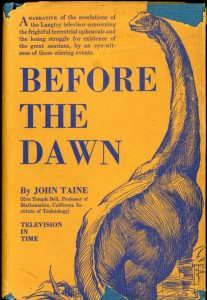 1934’s Before the Dawn by John Taine (pen name of Eric Temple Bell) is perhaps the first novel featuring dinosaur protagonists, predating Bakker’s novel by sixty-one years. The book’s prehistoric scenes are framed by scientists watching the beasts through some kind of time screen. One of the men has devised a means of replaying a residue of light within crystals just as someone might play grooves left by sound on an LP. The pseudoscience is beside the point, it’s just a vehicle to get to the dinosaurs.
1934’s Before the Dawn by John Taine (pen name of Eric Temple Bell) is perhaps the first novel featuring dinosaur protagonists, predating Bakker’s novel by sixty-one years. The book’s prehistoric scenes are framed by scientists watching the beasts through some kind of time screen. One of the men has devised a means of replaying a residue of light within crystals just as someone might play grooves left by sound on an LP. The pseudoscience is beside the point, it’s just a vehicle to get to the dinosaurs.